Daily we create a lot of food waste that we dispose of in sewers and landfills. Even when this waste is incinerated, it releases dangerous heavy metals into the atmosphere, which are extremely harmful to air quality and human health. However, food waste could be a valuable source, if we handle it in the right way. Some designers are now using food waste to produce sustainable items to demonstrate that there are alternatives to throwing it away.


Hidden Beauty by Clemence Grouin-Rigaux (also header image)
Clemence Grouin-Rigaux, French-born London-based material designer, aims to not only practically reduce the huge amount of abattoir waste generated every day by the slaughter industry, but to also change our perception of it as something unclean.
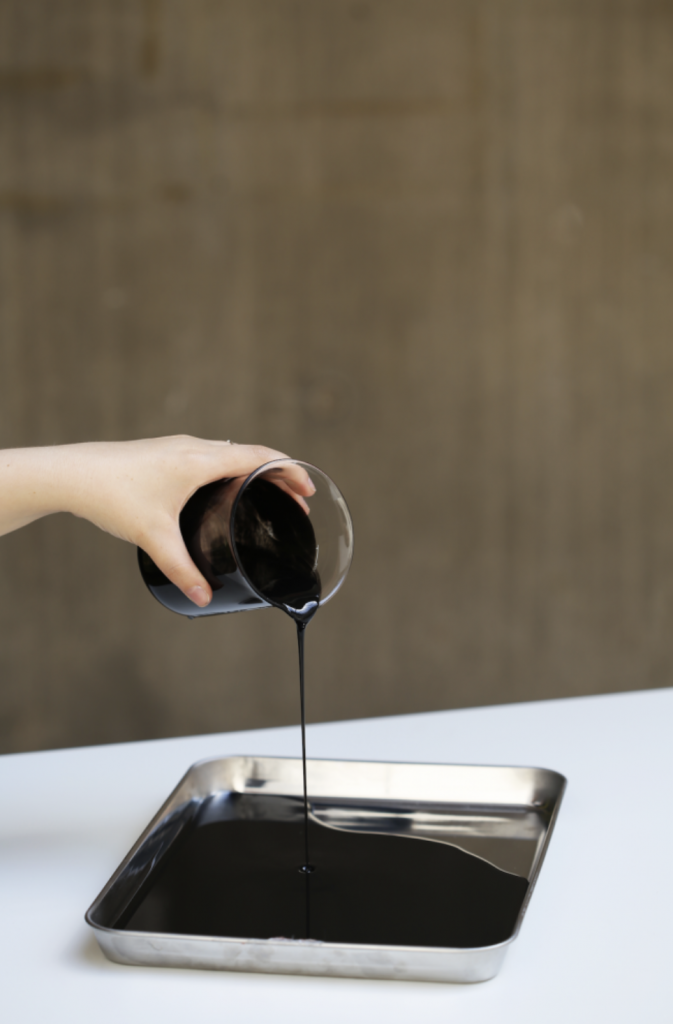

Hidden Beauty by Clemence Grouin-Rigaux
As a matter of availability, Grouin-Rigaux focused on sourcing all their waste materials from pigs including meat offcuts, as well as blood, bones, skin and hair from meat markets and local butchers, all of which can cause huge environmental problems.

Hidden Beauty by Clemence Grouin-Rigaux
The central part of the material, used for the creation of the Hidden beauty objects, is formed by bone glue or skin glue, which is then coloured with blood powder or bone char pigment. In thin layers, it can create a flexible and robust plastic, similar to leather or certain textiles. In large amounts, it becomes a durable material, similar to resin, which can be utilized for furniture and home accessories.
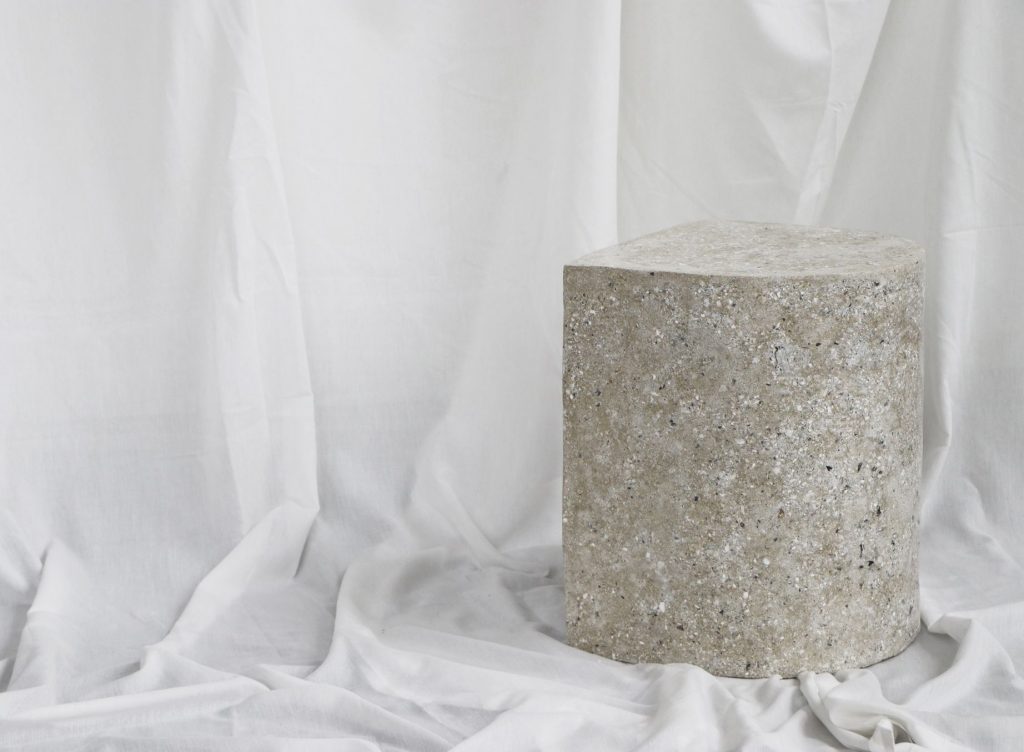
Gigas by Carolina Härdh
Upon discovering that approximately 1,3 tonnes of food waste are thrown away annually in Sweden, local designer Carolina Härdh has cooperated with Gothenburg restaurant Vrå to investigate their food waste, in order to create a sustainable design material through circular processes.
The versatile furniture piece named Gigas was conceived for use in the eatery, which serves Japanese dishes made from local Swedish produce, in a bid to show its guests the unexpected value of food waste and transform restaurant into a small ecological system, providing humans with food and giving back to nature in return.
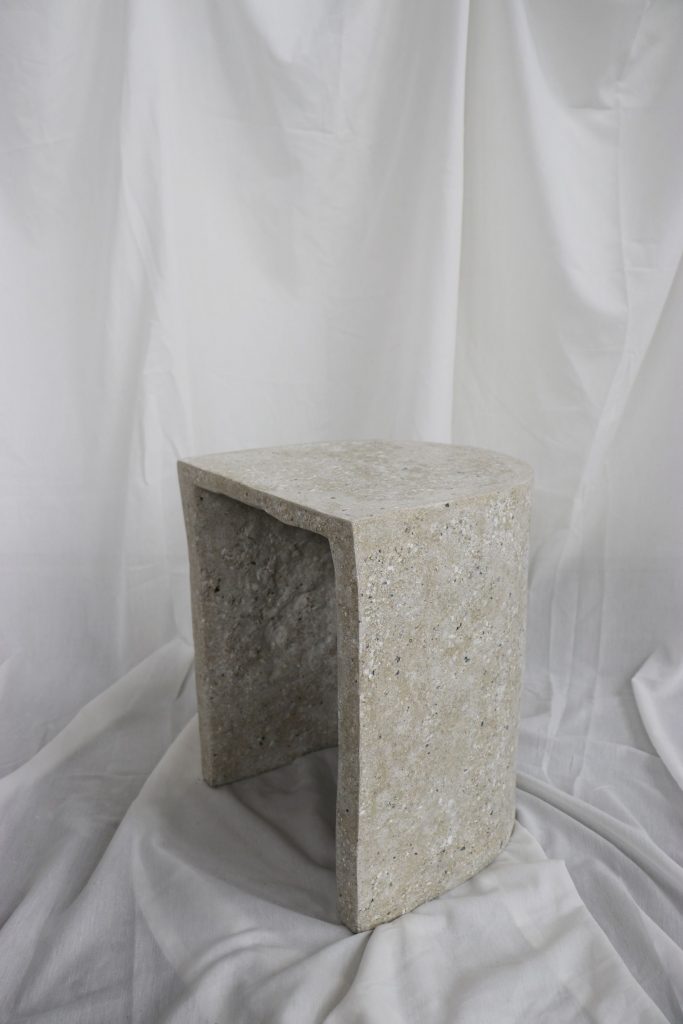
Gigas by Carolina Härdh
The material that Härdh created for the furniture resembles a biobased version of terrazzo. Instead of a cement base, it derives its strength from crushed seashells, which are equally rich in calcium carbonate.
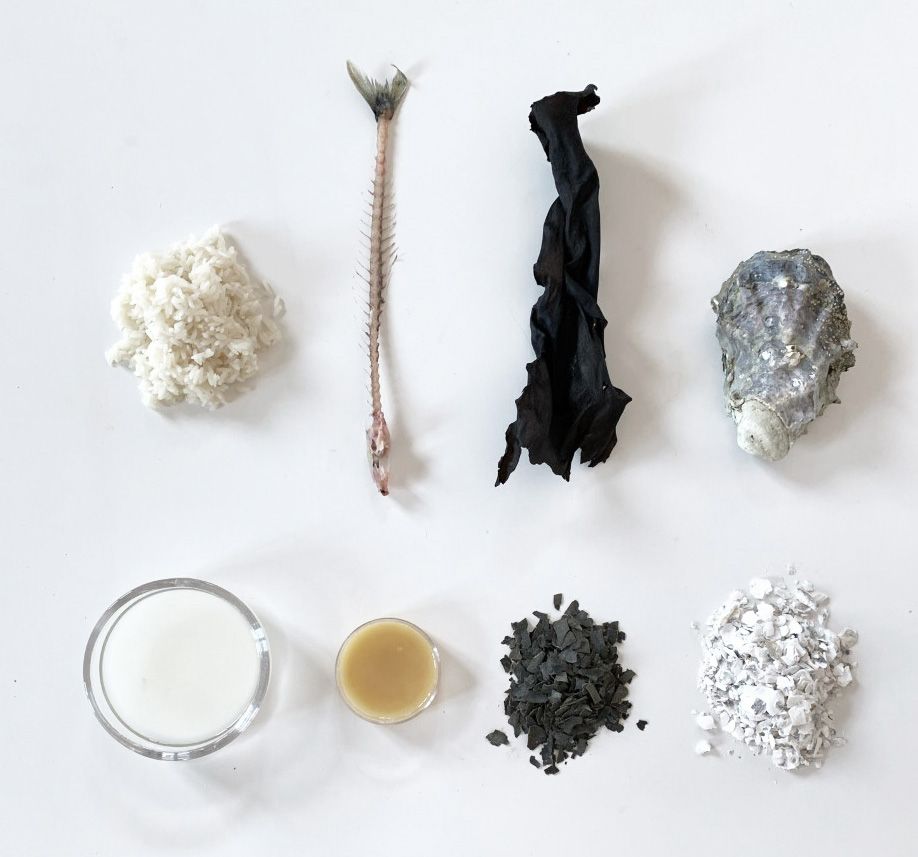
Gigas by Carolina Härdh
The fabrication process begins with grinding shells of wild Crassostrea gigas oysters into chunks of varying sizes, before combining them with dried bits of kombu – an edible kelp traditionally used to make soup stock in Japanese cuisine. Together, these two ingredients act as an aggregate and help create the speckled terrazzo-like texture. The mixture is bound together by fish glue – a natural adhesive made by boiling down fish bones – and starch sourced from the water used by the restaurant to soak rice. The designer then casts the concrete-like mixture into two separate moulds to form the stool’s geometric base and seat of the Gigas stool, which can also double as a side table.
To illustrate he different scales and applications the material can be used for, Härdh formed leftover bits of material from the production of the stools into oblong pebbles that can serve as chopstick rests, called hashioki.
Since the material is only made of components that come from nature, the pieces can be recycled to create new objects or left to biodegrade. Both oyster shells and fish glue contain a lot of good nutrients that can be used to enrich soil. Except for the rice starch, all the components come from the ocean – besides, fish glue dissolves in water. All this makes the material biodegradable in relation to the ocean, too.
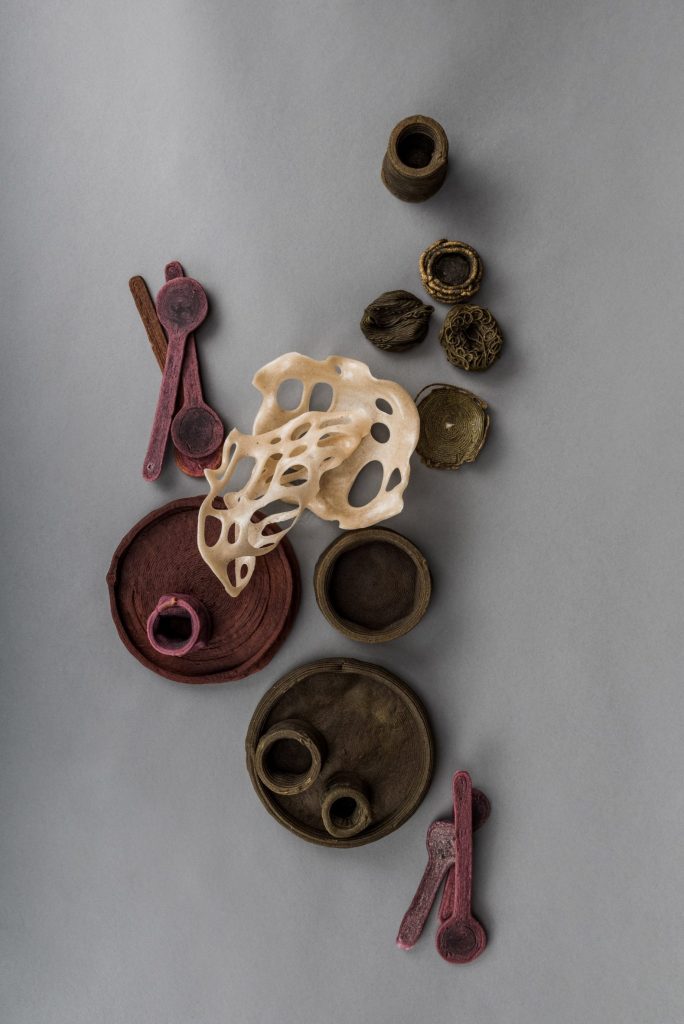
Wasteware by Barbara Gollackner
Viennese designer Barbara Gollackner has also teamed up with a restaurant to create an innovative sustainable material made from their leftover food. Together with Austrian chef and restaurant owner Martin Kilga, they have launched Wasteware, a collection of homeware items made from food waste, such as pork skin and stale bread.
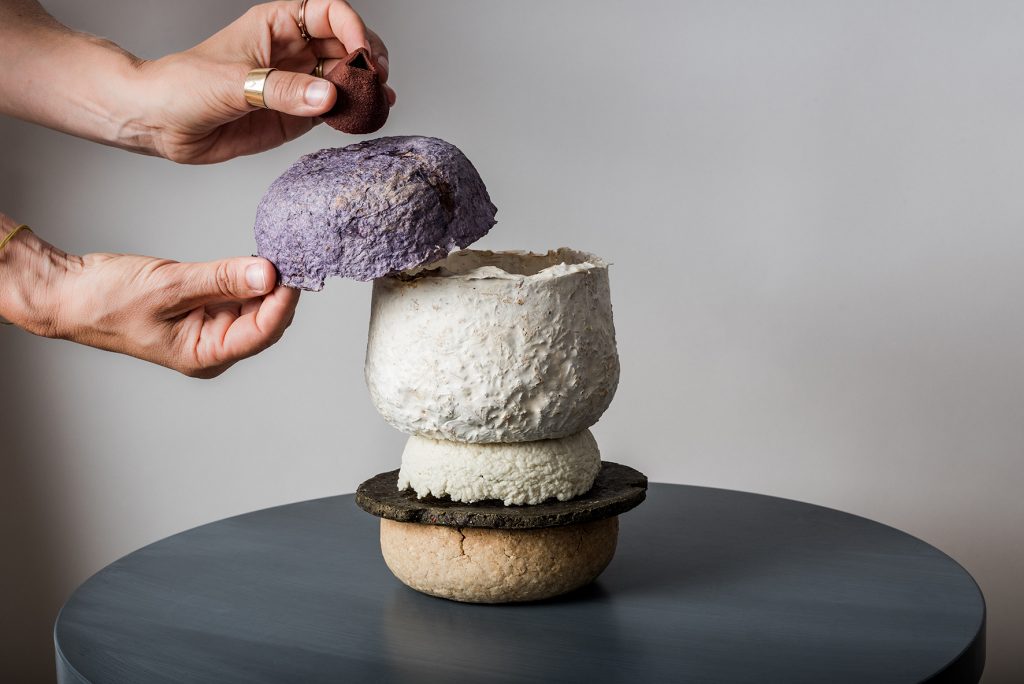

Wasteware by Barbara Gollackner
The idea came to the designer when she learned about Europe wasting 90 million tons of food every year and at the same time producing around 30 million tons of waste from single-use dishes. The Wasteware project seeks to connect these two issues via making new materials out of food waste.
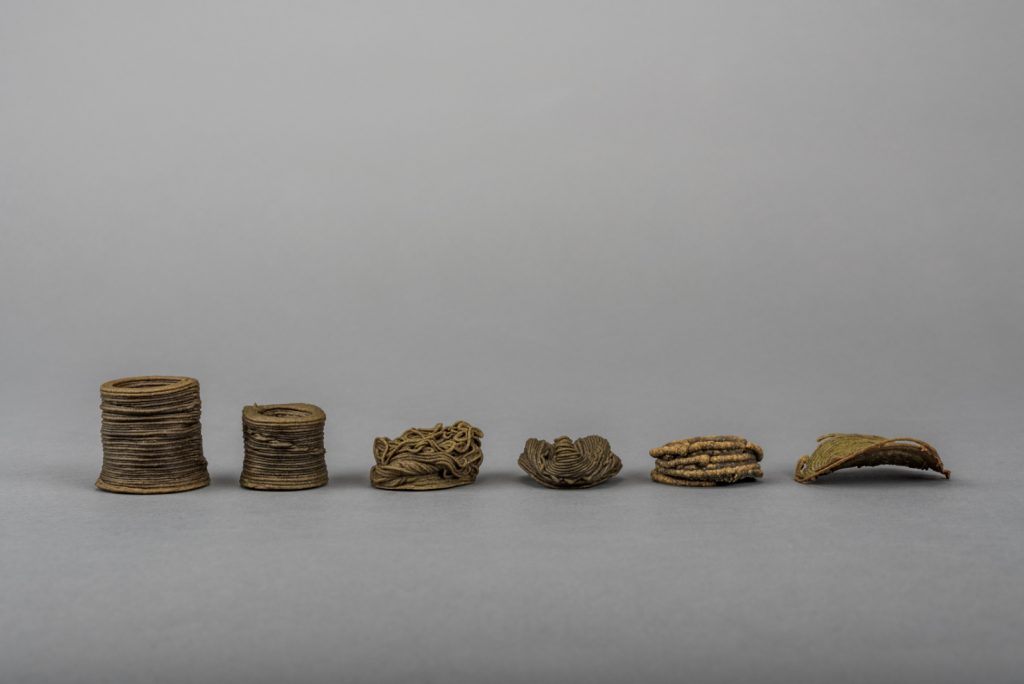

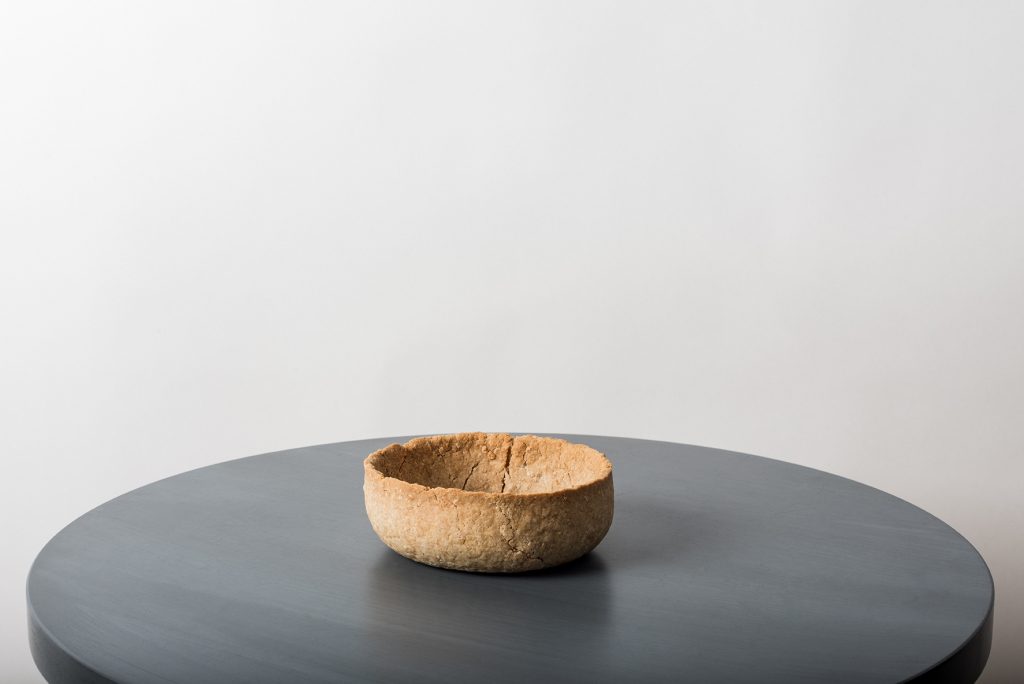
Wasteware by Barbara Gollackner
To create the material, the waste is either dried or cooked, depending on the food and then blended into a smooth paste that is bound together by mycelium. The paste is then used to 3D print simple, minimalist shapes. The resulting range is comprised of bowls, plates and cutlery.